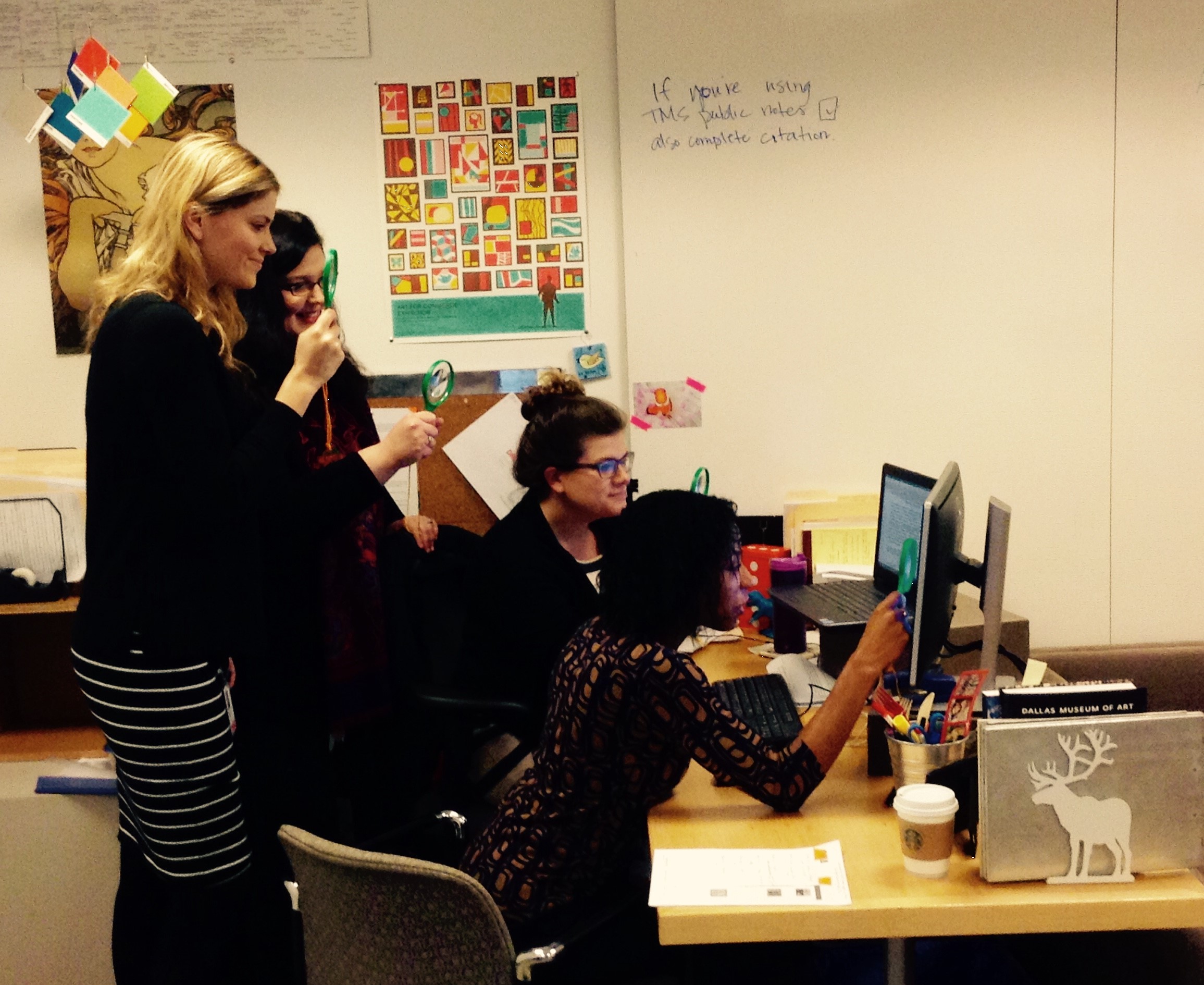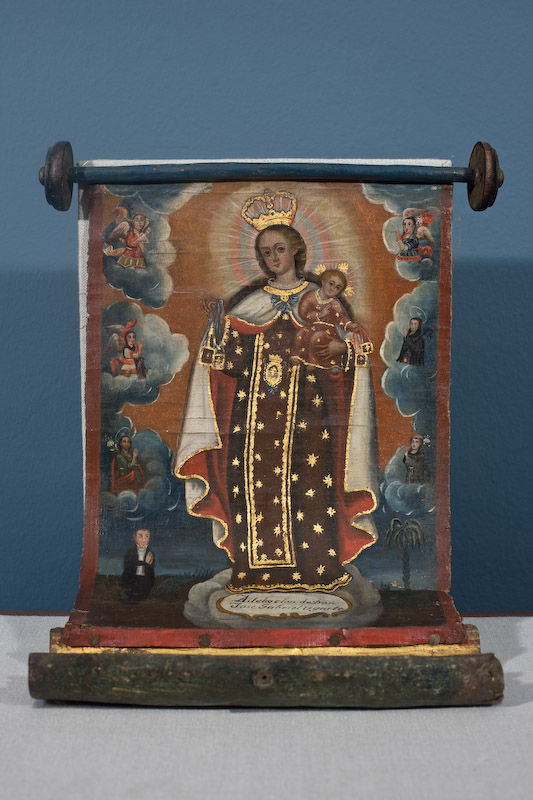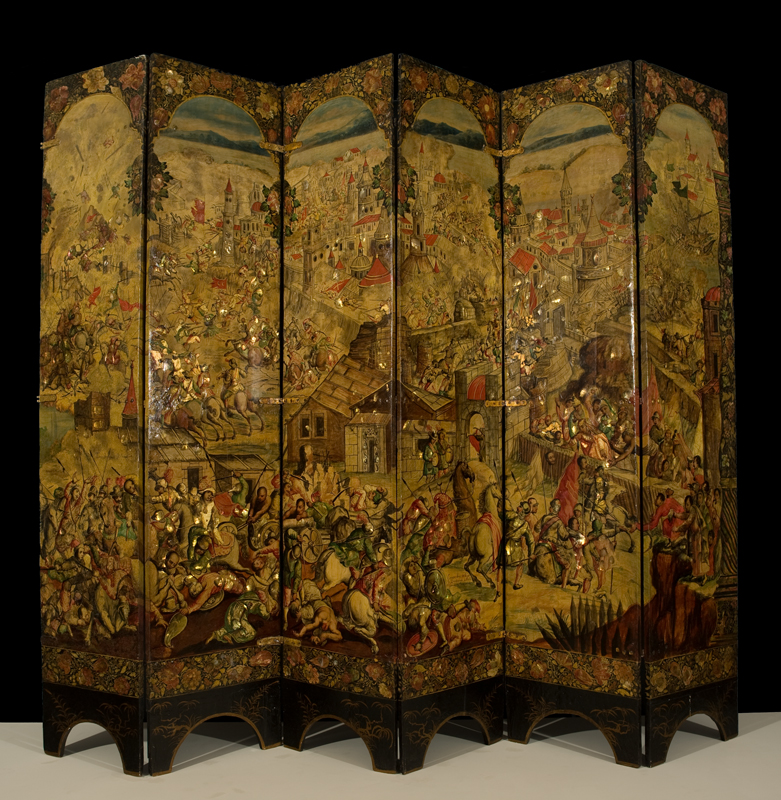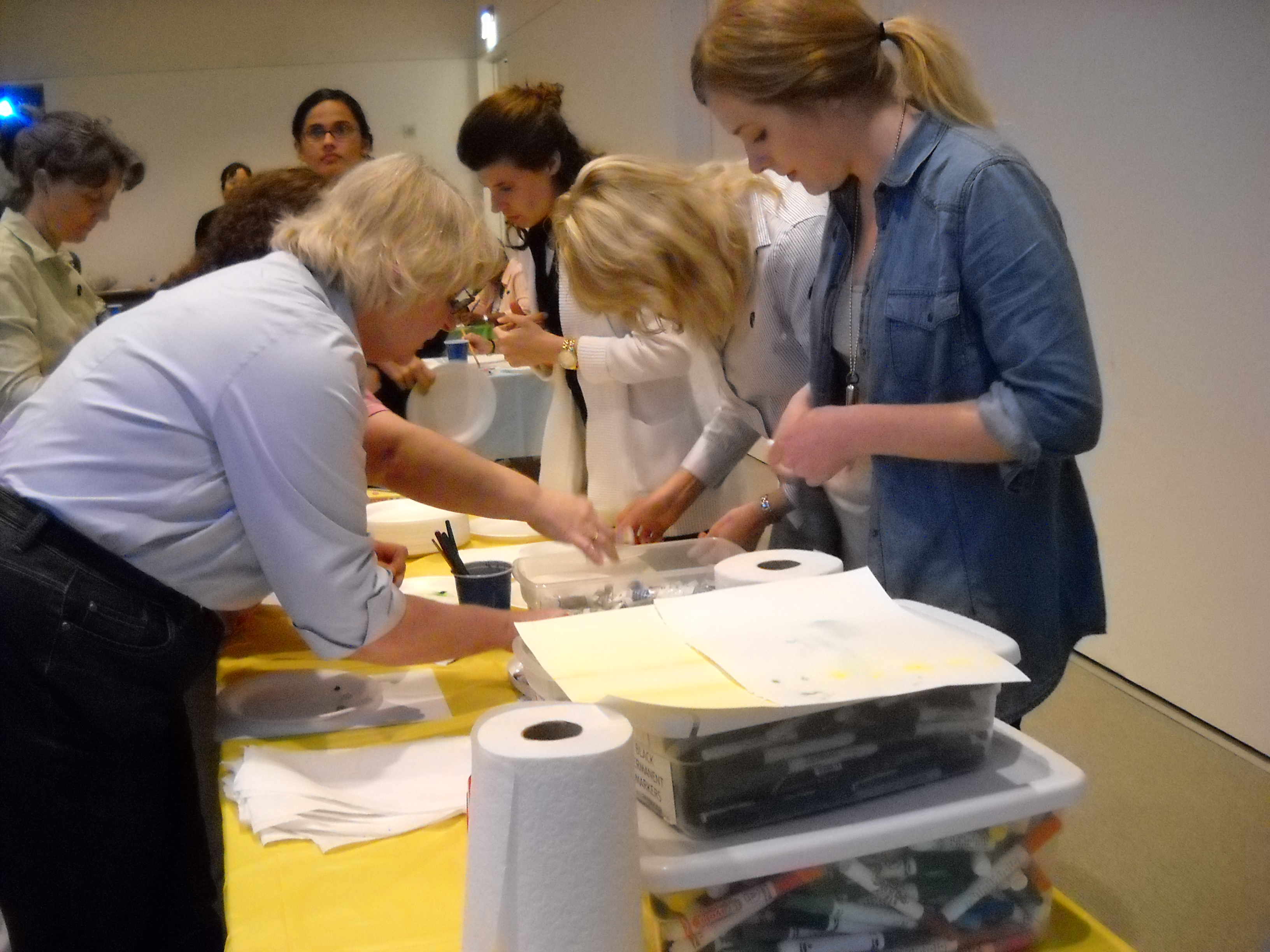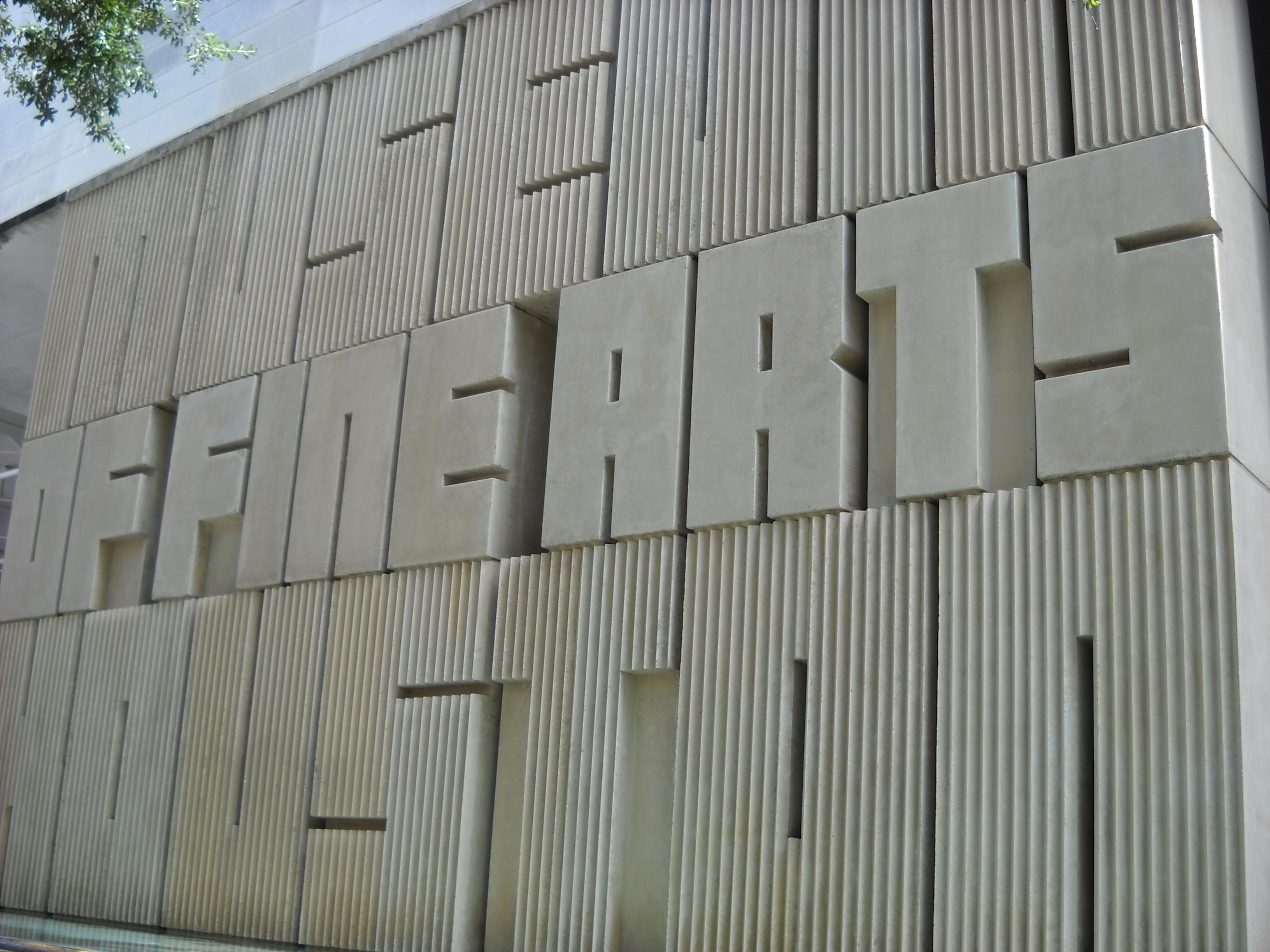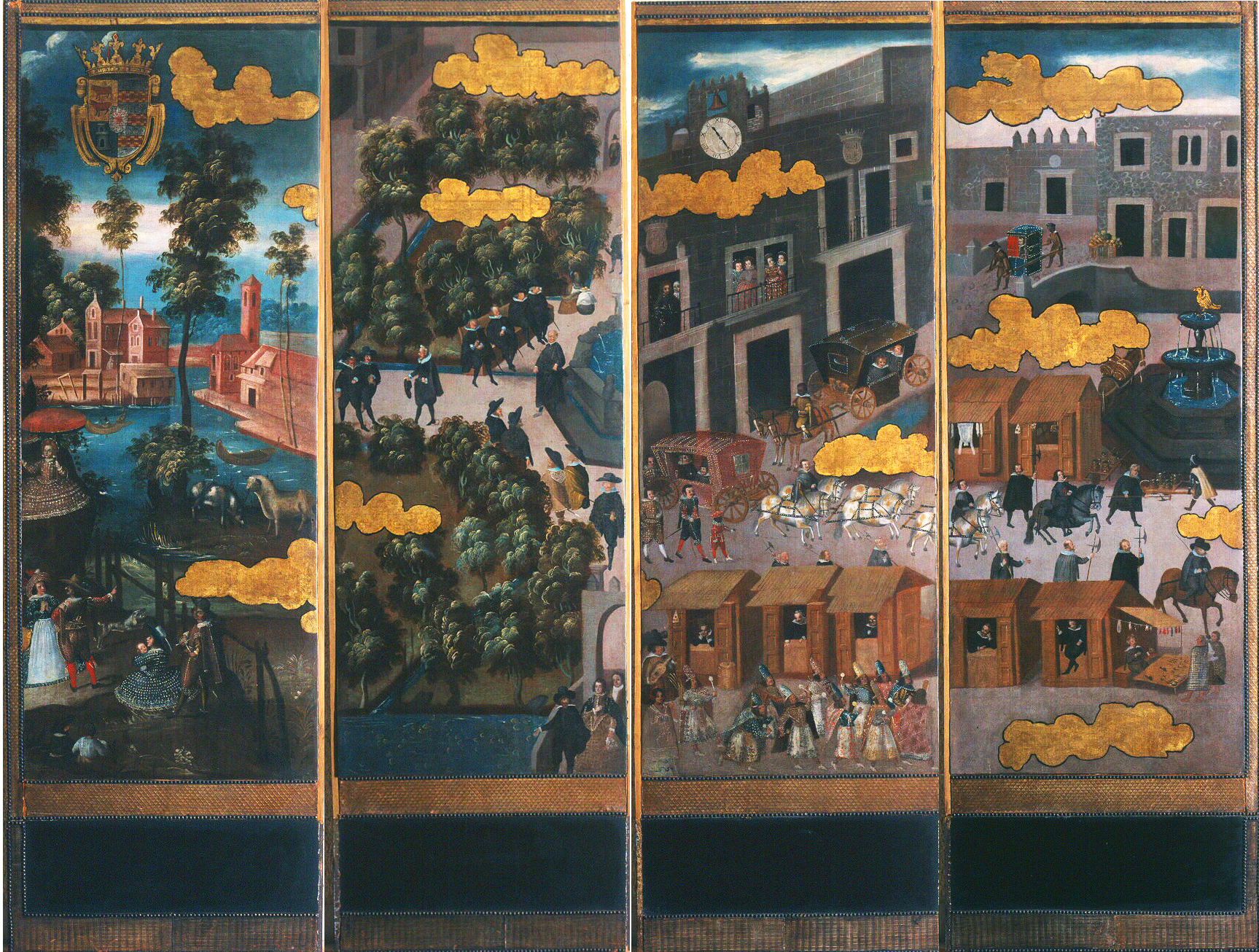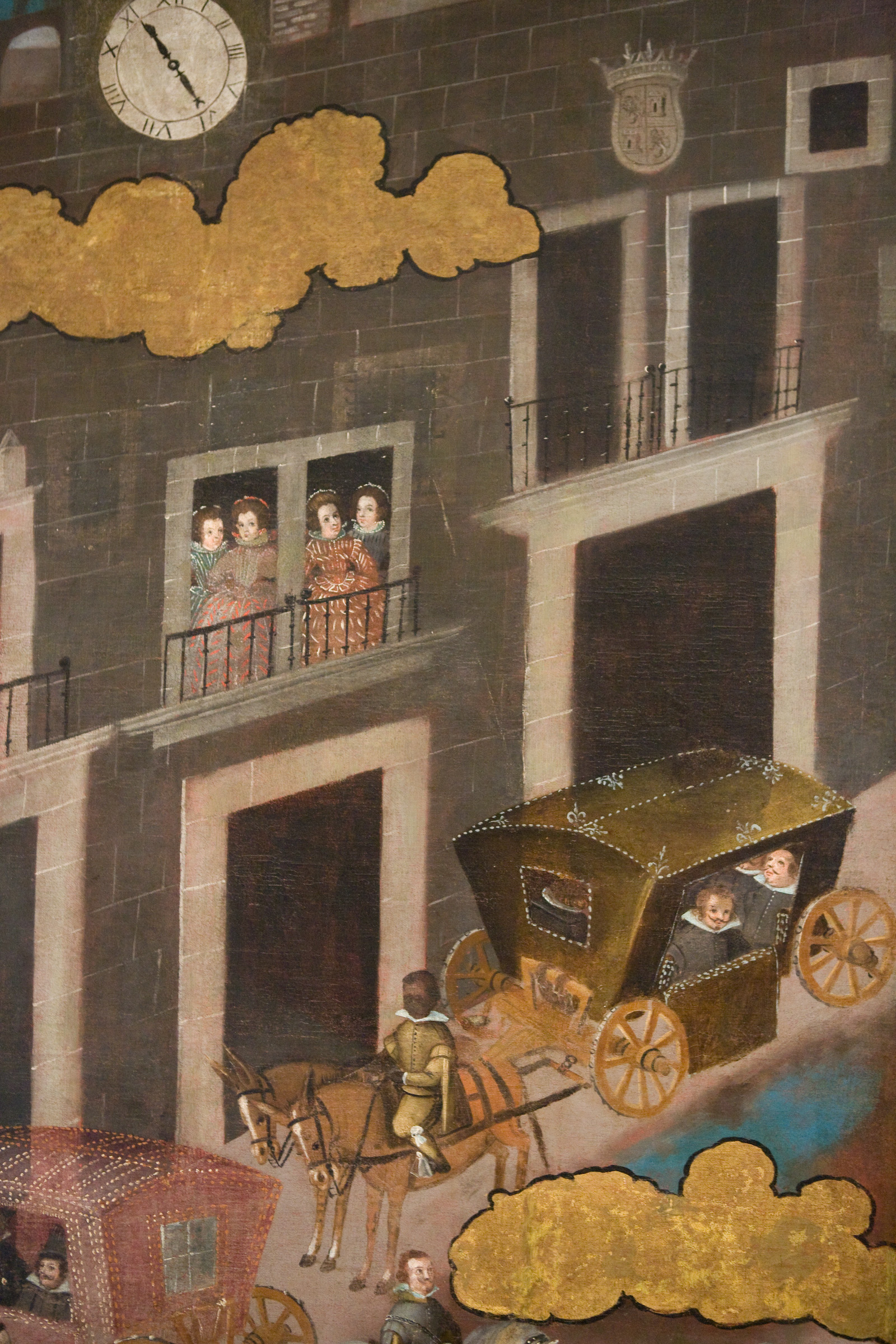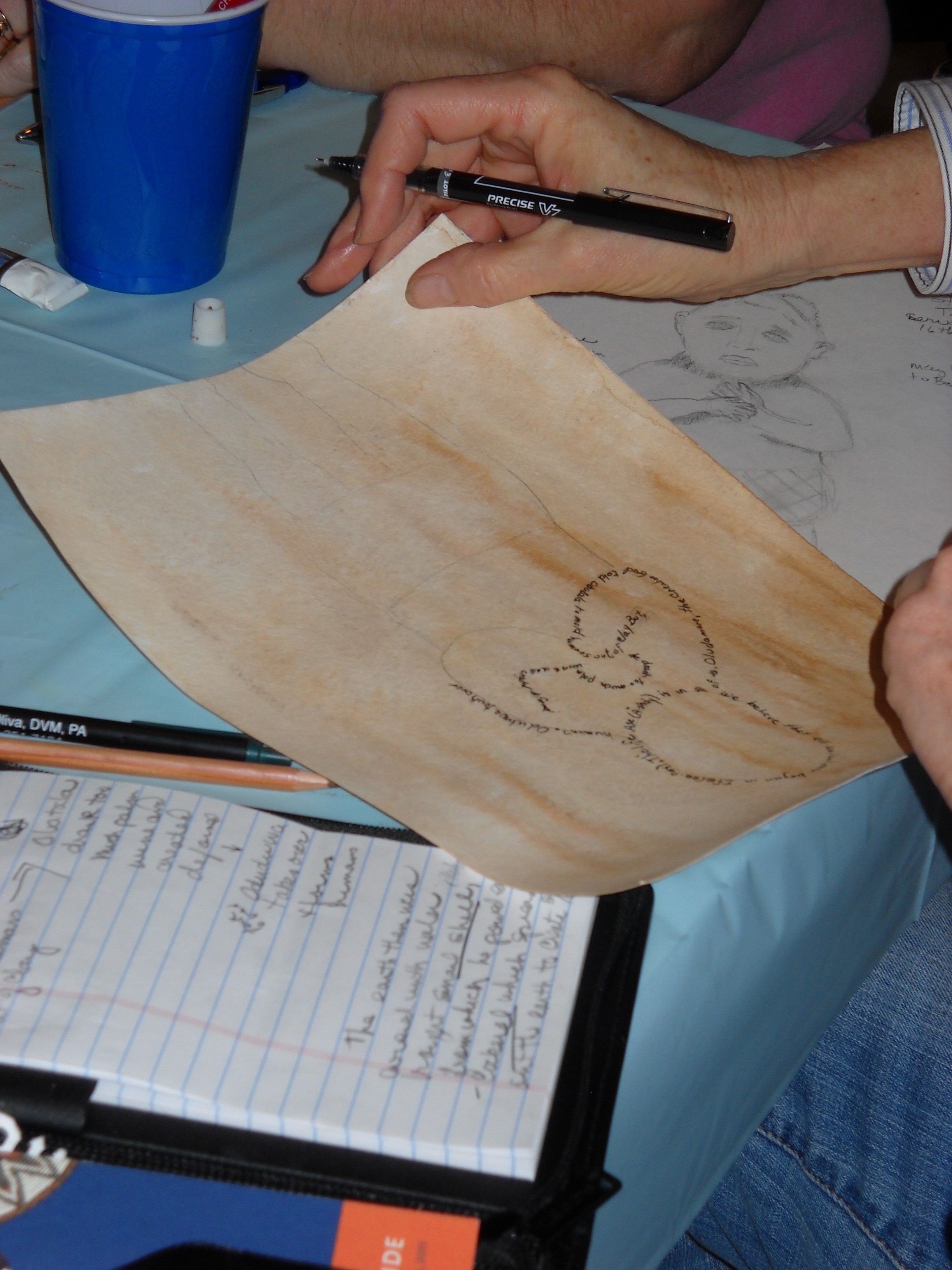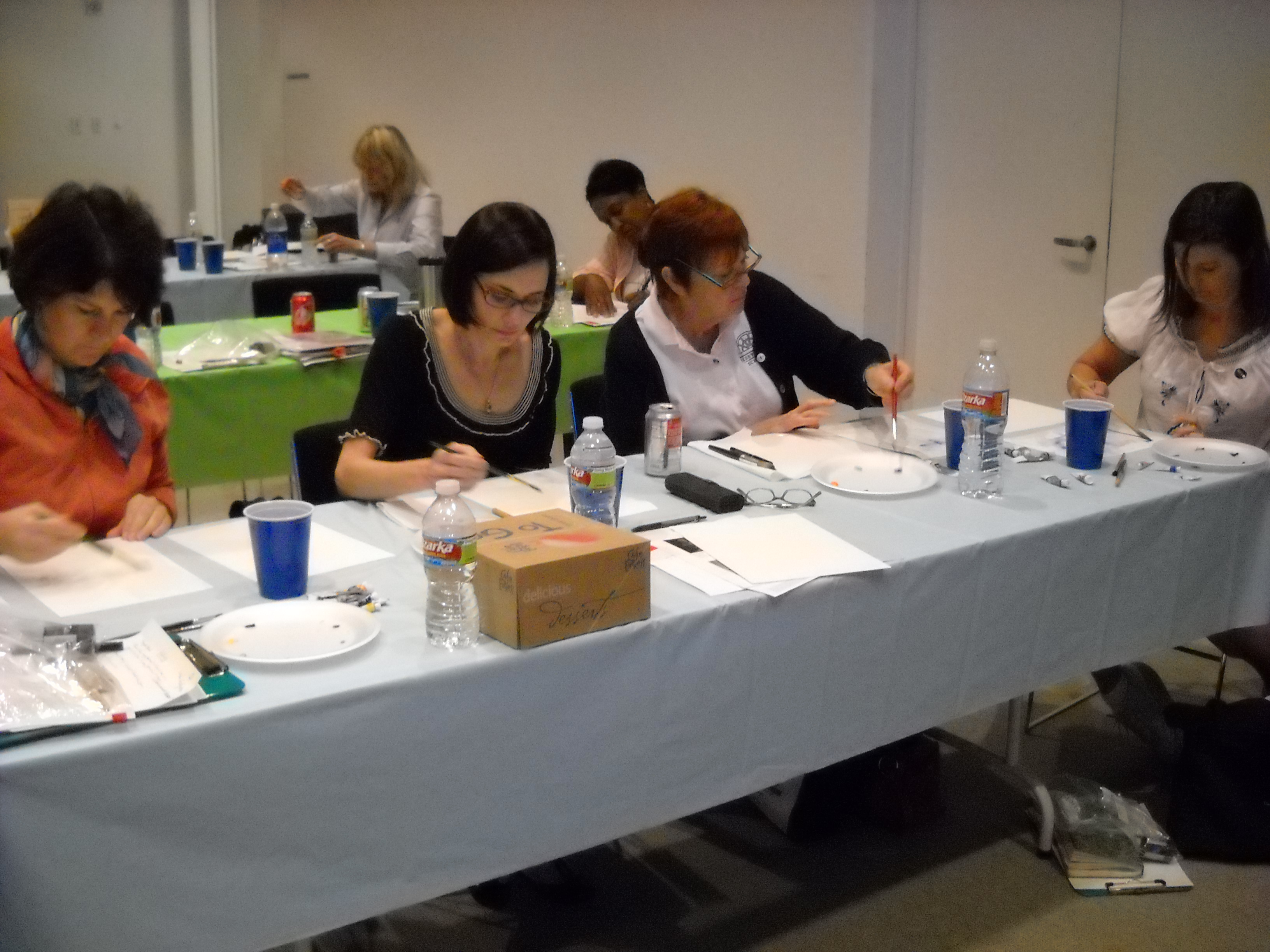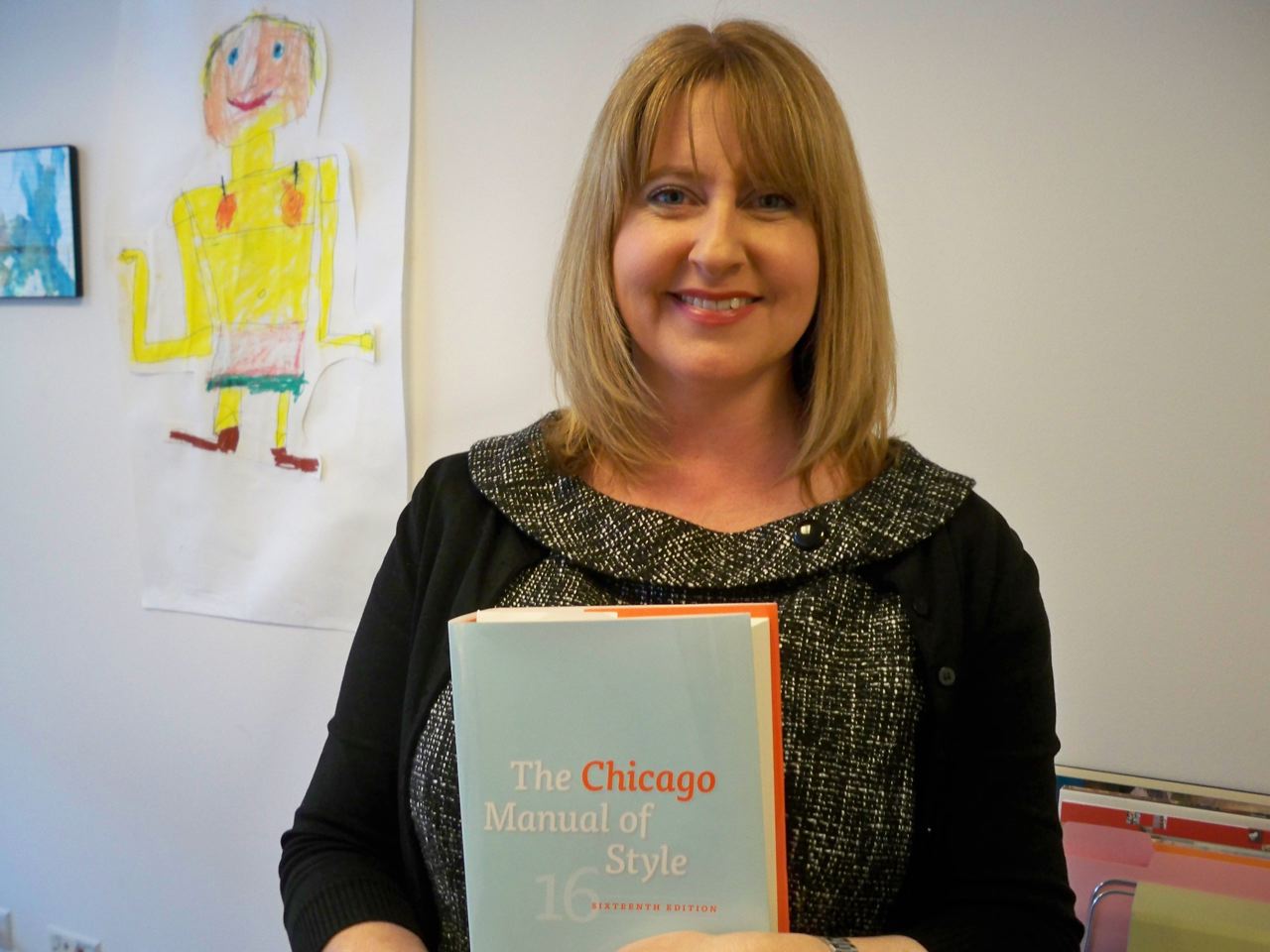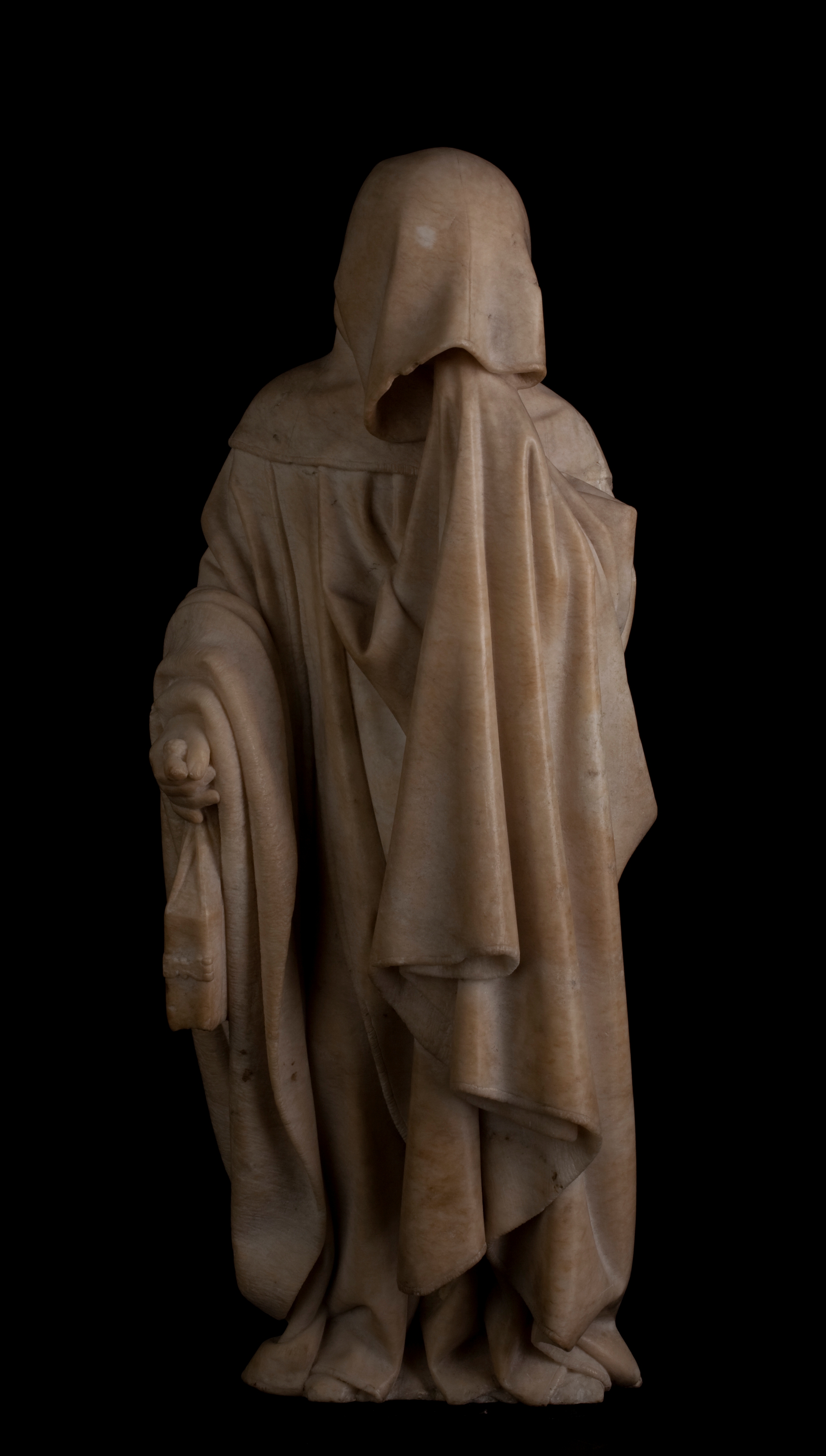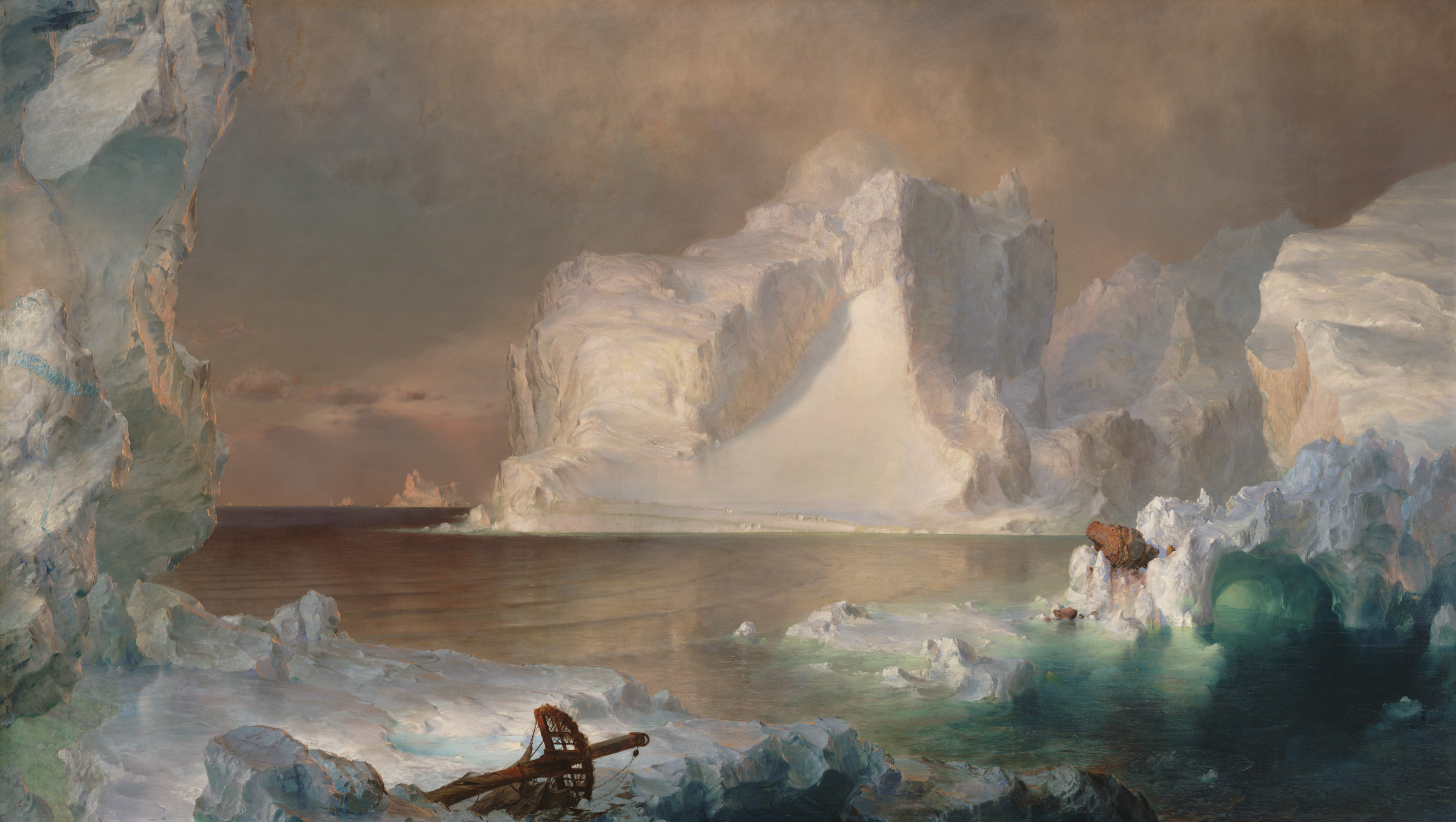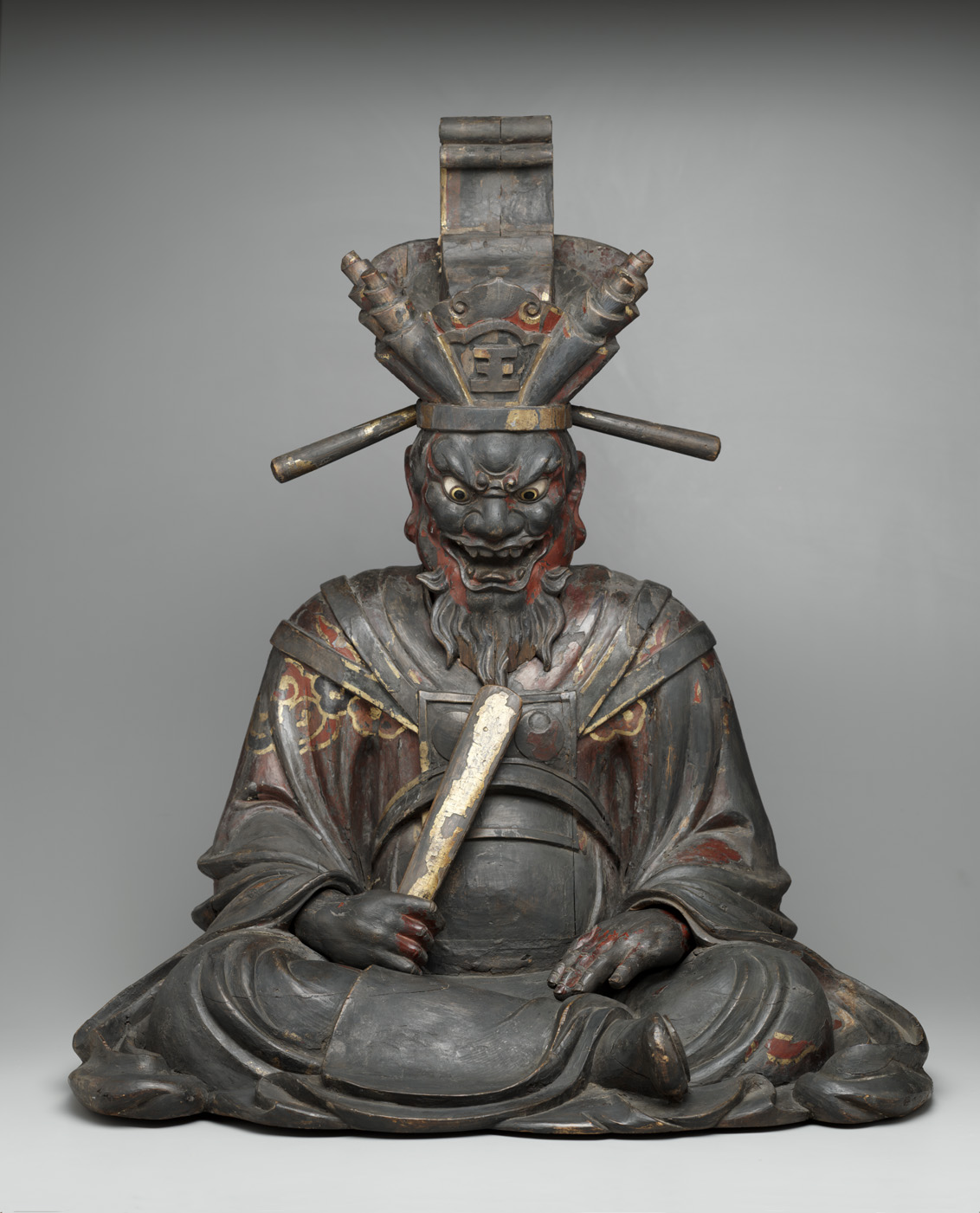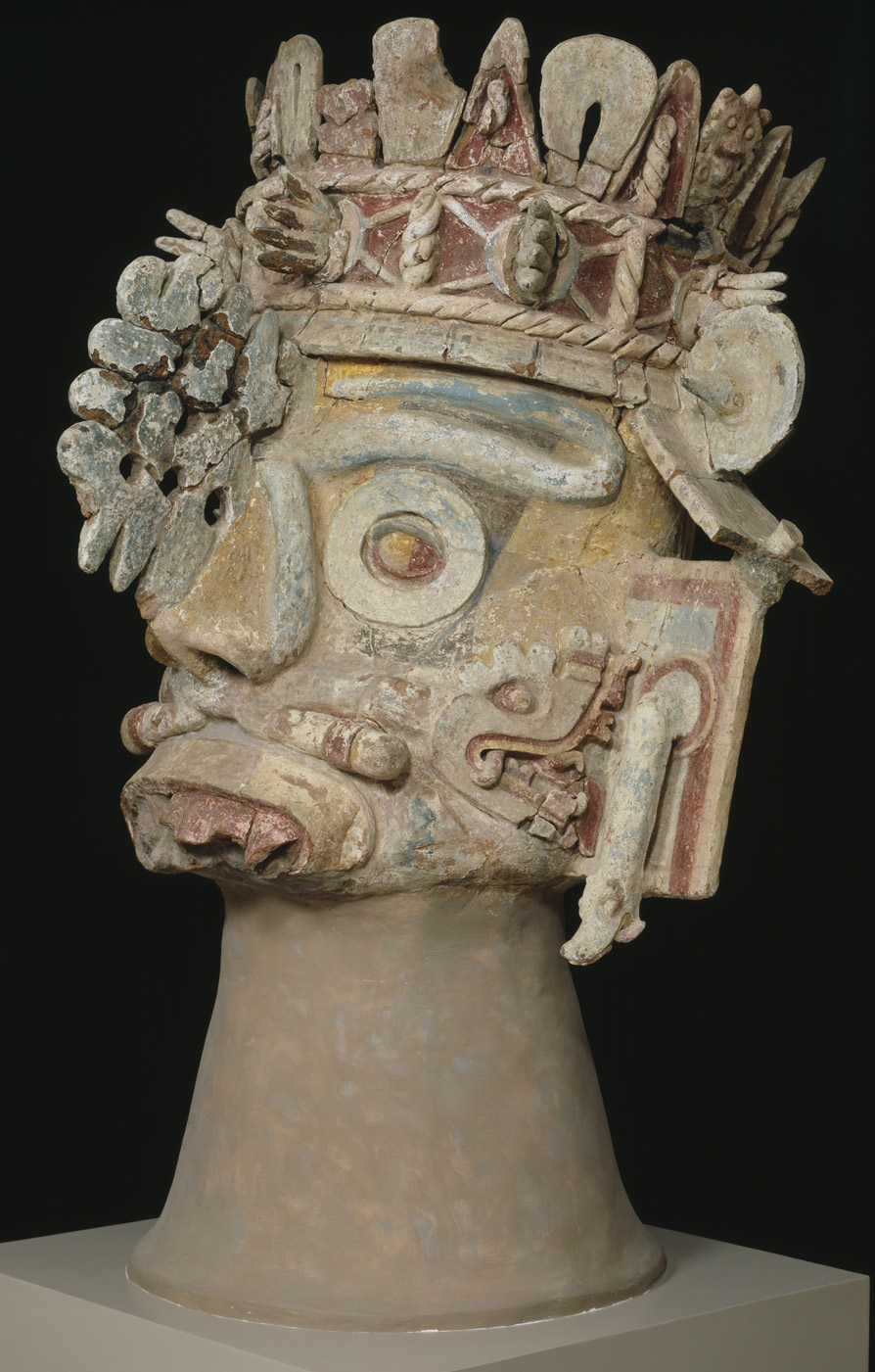We are thrilled to welcome four new members to the DMA’s Education Division–Jeelan Bilal-Gore, Elaine Higgins, Samantha Robinson, and Emily Schiller–who are our new digital collections content coordinators, or D3Cs. This newly-created team is responsible for the research, aggregation, and digitization of rich, contextual information that will be presented on our online collection.
Essentially, the D3Cs are like detectives that unearth and build upon research the Museum has conducted on our collection. Then, they package that information for public consumption. For example, virtual visitors to the DMA will eventually be able to not only search for an artwork and find beautiful images, but also learn interesting details like who made the work, why or how they made it, and when. Our D3Cs will focus on artwork that is on view and recently on view, so that visitors will be able to access this content via smartphone or tablet while they meander through our galleries.
The work the D3Cs are doing is part of a five-year project funded by a generous $9 million gift to the DMA to support free general admission and free online access to our permanent collection. We are excited to be able to enrich our online collection and to provide this resource to onsite and digital visitors alike.
- L-R: Samantha, Elaine, Jeelan, and Emily
Meet the D3Cs
Jeelan is working with our Asian, African, Pacific and Contemporary collections. She holds a Masters degree in Art Museum and Gallery Practice from Newcastle University and a second MA in Art History from the School of Oriental & African Studies at the University of London. Her BA focuses on Asian languages and civilizations from Amherst.
When asked what DMA work of art she was most excited to research…
Just one?! The ones I am excited about are not currently on view but have been in the last five years (though of course there are some that haven’t been on view longer that I’m dying to look into like Shirin Neshat’s Soliloquy and Willie Doherty’s Ghost Story). It’s a toss-up between Yinke Shonibare’s Un Ballo in Maschera and Koki Tanaka’s Everything is Everything.
Elaine is focusing on our pre-Columbian, American Indian, and Latin American collections. She returns to the DMA as a Ph.D. candidate focused on Spanish Colonial art at the University of New Mexico. She also holds an MA in Art History with an emphasis in Pre-Columbian art from UT Austin and a BA in Art History from TCU.
When asked what DMA work of art she was most excited to research…
The Seated hunchback holding mirror and Reclining hunchback holding rectangular object, displayed together. Since I conducted my thesis research on the dwarf motif in Mesoamerican iconography, I am most looking forward to finding out more about these extraordinary works in our collection!
Samantha will be concentrating her focus on our extensive Decorative Arts and Design collection. Most recently, Samantha served as a McDermott Intern (2014-2105) and holds an MA in Art History with a concentration in 19th and 20th century American silver from SMU. Her BA is from Macalester College in St. Paul in International Studies.
When asked what DMA work of art she was most excited to research…
I am most excited to research our Valeri Timofeev martini glass. Acquired in 2014, the brightly colored and profusely patterned martini glass is the first design by Timofeev, a Latvian born designer trained in the former USSR and active in the United States, in the DMA’s permanent collection. I am eager to learn more about the Russian designers, such as Rasul Alihanov, and studios, such as Fabergé, Ovchinnikov, and Khlebnikov, that influenced the material and formal elements of Timofeev’s designs.
Emily is focused on our American and European collections, in addition to working with our aAncient Mediterranean and Contemporary collections. A former McDermott Intern (2012-2013), Emily is a Ph.D. candidate at Penn State University, concentrating on the History of Photography and African American art, and she also holds an MA in Art History from American University. Her BA is in Art History and Women’s Studies from Hollins University.
When asked what DMA work of art she was most excited to research…
Something that excites me about researching an object is if it was acquired during the early decades of the collection. Any work that has an accession number from the 1900s through 1940s is fun because then it has two historic narratives. One is the history of the art and its creation, and the other is the history of how that piece has been exhibited or discussed since coming into the DMA’s collection.
One work that has intrigued me since the start of my Internship is Zoltan Sepeshy’s The Whole Town. He is an artist I know very little about, but his name repeatedly popped up when I was doing my dissertation research. I have a feeling he was an individual who socialized and interacted with some of the major art figures during the New Deal and WWII-era, but got neglected by later generations of scholars.
Be sure to keep an eye on our online collection to discover the interesting facts they’re sure to find!
Andrea Severin Goins
Interpretation Manager

